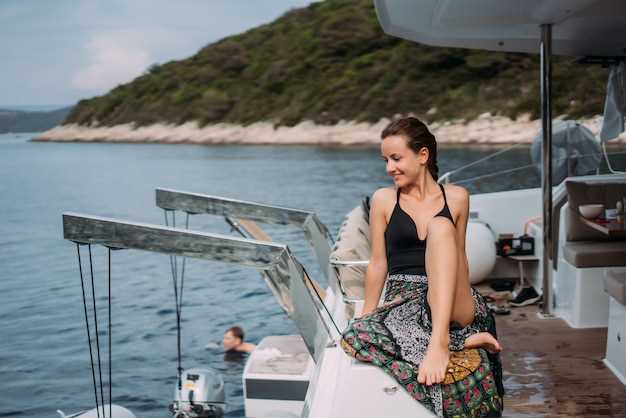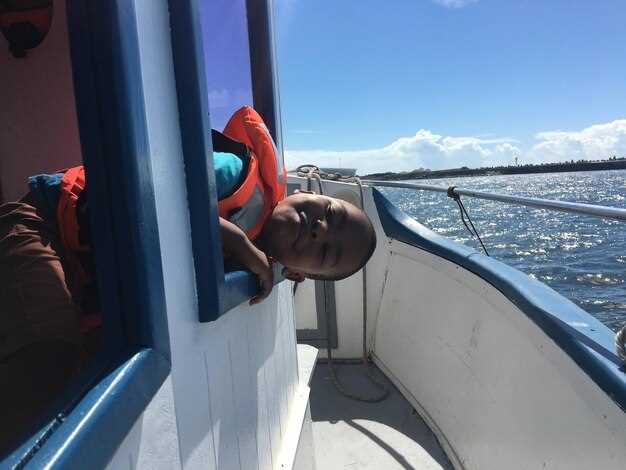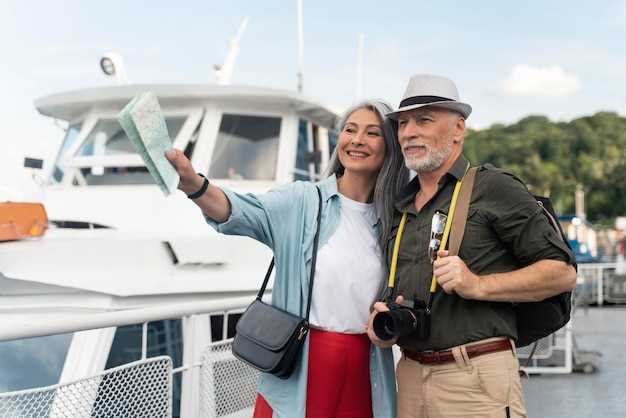Recommendation: You are transferred from the airport directly to the yacht in Nosy Be, then follow a circular seven‑day route that visits Tanikely, Lokobe, the Mitsio and Radama islands, and Île Sainte‑Marie, exploring distinct regions of biodiversity along the indian Ocean.
Day 1: Tanikely Marine Reserve becomes your initial haven; plan 2–3 hours of snorkeling among vibrant reefs, followed by lunch on deck. In the afternoon, deploy the zodiac for a cruise along an alley of mangroves and watch for rays, turtles, and curious reef fish.
Day 2: Sail to Nosy Komba and Lokobe Reserve, with a short climb toward a summit overlook that reveals a broad forest canopy and a distant mountain silhouette. Discover lemurs and endemic plants, then enjoy maki and fresh fish for lunch, followed by snorkeling around nearby islets to observe biodiversity and ecosystems.
Day 3–4: Head east to the Mitsio archipelago for pristine lagoons and coral gardens; the areas around these islands host varied ecosystems and vibrant biodiversity. The zodiac proves ideal for intimate shore visits. On Day 4, continue toward the Radama Islands, where seabirds and sea turtles populate the coves, then enjoy a warm sunset and a lunch on deck.
Day 5–6: Move toward Île Sainte‑Marie for long beaches and sheltered bays; in the morning, explore a protected cove and hike toward a hilltop. Watch for migrating dolphins and whales, depending on season, toward a haven with calm waters. Lunch features a locally sourced catch and items for a relaxed on‑shore picnic. In the afternoon, anchor in a quiet lagoon and check gear, provisioning, and safety equipment.
Day 7: Return toward Nosy Be through the regions and areas you visited, with a couple of short swims and last photo opportunities. The route offers a perfect balance of private coves, warm waters, and mindful pace, with the crew handling transfers, provisioning, and safety checks so you finish rested and inspired and ready for a new plan.
Day-by-day route chart: sea days, anchorages, and park visits
Start Day 1 with a dawn departure from the capital’s gateway and set course for mitsio, the first sheltered anchor. Sail 25–30 nm along a crisp NW breeze, then drop the hook in a calm bay on mitsio’s east side. Disembark for a short shore stroll among bamboo stands, scan for grey chameleons on the rocky outcrops, and photograph a panorama over the sea. Dinner on deck features a tablecloth and a candlelit spread, bringing a sense of home at sea.
Day 2 continues with a morning reef swim and a quiet afternoon sail to Ampangorina, where a shallow lagoon provides a peaceful welcome. Anchor for the night in a protected harbor, and also take a stroll to a local viewpoint for a sunset panorama. This leg covers about 18–22 nm and keeps the engines on low for steady motion, making the ride smoother for spectators on deck.
Day 3 heads toward a sheltered coast for a park-side stop. Keep a steady pace of around 20–25 nm and prepare a tender transfer to a coastal access point. The rugged shoreline offers natural scenery and nature moments, including a chance to observe seabird nests in the early hours and to feel the different mood of the coast.
Park visits and anchorages
Day 4 features a guided land excursion to tsingy, the dramatic limestone karst. Disembark, drive to the canyon, and walk among grey spires, then climb for a panoramic view over the forest. Return to the yacht before dusk for a relaxed dinner and a sense of accomplishment after the day on solid ground.
Day 5 shifts southward to isalo, with a private overland transfer arranged from a nearby airstrip to Isalo National Park. Stay at a comfortable hotel near the park entrance, and spend the morning exploring canyons, natural pools, and unique rock formations. Back on board, share notes about the trail and the chance to photograph the surreal sandstone scenery at its most dramatic. Dinner features local flavors and a quiet deck under a starry sky.
Day 6 moves back toward the coast, with a stop near a second nesting site and an afternoon snorkel along a coral shelf. The crew spots a diversity of reef life, and if luck allows, a gentle sighting of sea turtles gliding by. Evening panorama from the bow offers a final touch of serenity before a close-to-home approach.
Day 7 completes the loop with a final sea day back toward the Nosy Be region and a last anchorage in a familiar cove. Disembark in the morning at the home port, with a checklist of highlights from mitsio to tsingy, and a final reflection on the voyage as a private yacht itinerary.
Practical notes

Pack a lightweight jacket for breezy mornings and cooler evenings, plus a compact camera to capture panorama moments. Bring a sturdy tablecloth for deck meals, and plan hotel stays near Isalo if a land side visit is chosen. Ensure you have a passport valid for the region and arranged disembark formalities in advance. The route favors calmer seasons, but adjust to prevailing winds and local constraints.
Access to The National Park of Andasibe-Mantadia: best coastal-to-land transfer options
Recommendation: book a private 4×4 door-to-door transfer from your coastal gateway, such as Toamasina, directly to Andasibe-Mantadia for a smooth start to your itinerary and a timely arrival aligned with park opening times.
Direct coastal-to-land drive: a private operator collects you at the port or airport and delivers you inland in about 4–5 hours. This option lets you enjoy views of rich landscapes, stop for water and snacks, and include a short visit to Mitsinjo, a community-led conservation initiative, before reaching accommodation near Andasibe.
Coastal-to-land via Moramanga (shared taxi-brousse): take a taxi-brousse from the coast to Moramanga, then transfer to a private car for the final leg to Andasibe. It is a more economical choice that still keeps your timeline practical; you may pass through ankarea and other small villages where spices and crafts are traded, adding a useful cultural break to the journey.
Fly-and-drive from the coast: combine a short domestic flight from Toamasina to Antananarivo with a private transfer to Andasibe. This approach shortens road time, giving you more opportunity to rest at your accommodation and start exploring the main trails immediately upon arrival.
Pangalanes canal + land transfer: enjoy a scenic boat ride along the Pangalanes canal to a nearby inland point such as Manambato, then continue by road to Andasibe. This option offers magnificent water landscapes, opportunities for swimming if conditions permit, and a chance to see coastal communities who rely on tourism and agriculture.
Best routes and practical tips

Coordinate departure times with your charter operator to avoid peak-traffic delays and to maximize time in the park. Request a vehicle with comfortable seating and ample space for camera gear, water, and snacks; confirm a driver who speaks basic English or French and can offer anecdotes about local heritage and landscapes.
Ask your guide to include a brief stop at mitsio or mitsinjo sites and a short community visit to support local conservation work while learning about the region’s main biodiversity. Planning ahead helps you combine accommodation options with night walks and daytime trails, enriching your tourism experiences and protecting local habitats.
Culture, heritage and conservation stops
If your departure allows, insert ambohimanga as a cultural detour to connect royal heritage with your nature-focused itinerary. This known heritage site adds a meaningful layer to your journey and connects the coastal-to-land route with country-level history, enriching the overall experience as part of your countrys rich tapestry of landscapes and traditions.
Wildlife priorities: Indri indri, diademed sifaka, and endemic birds in Andasibe-Mantadia
Book a guided dawn walk in Andasibe-Mantadia to ensure you see Indri indri and diademed sifaka when they are most vocal and active. Plan a 2–3 hour duration in the early light to maximize your chances, and request a Russian-speaking guide if you want help with language. If you arrive by flight into Ivato, arrange a road transfer to your home-style accommodation near the park so you can drop your bags and start wildlife watching without delay.
On the main trails through tropical rainforest, the Indri indri live in the upper canopy, and their songs travel along alley-like clearings between mossy trunks. The diademed sifaka moves with a distinctive hop, skirting roots and licheny branches; you may glimpse it crossing a sunlit limb. A little patience pays off with rare, close looks of both species as they respond to the morning chorus, creating a beautiful moment you’ll remember long after your return.
Endemic birds enrich the scene; target a dawn or late-morning window for birding among vines and watercourses. Listen for calls that rise above water and forest sounds, and keep still to let color and shape reveal themselves. Your guide can point out species unique to Madagascar and explain how habitat, season, and weather shape their behavior. If you include a river element, a short cruise can reveal water birds and turtles along the banks.
Nearby Komba viewpoints offer a taste of local life and cultural heritage. The route features baobabs along the south track and near uninhabited stretches that reward patient observers. Stay in a modest accommodation that serves as home base, and drop into a little rest between sessions to recharge. Protecting the forest means sticking to trails, avoiding disruption, and supporting community-led efforts that preserve wildlife and culture for your future travels and for local families alike. Indulge yourself with a quiet moment by the stream or a small tea break to savor the tropical atmosphere and beautiful surroundings.
Best spots and times for observation
Start at dawn in Mantadia’s upper trails for Indri indri and diademed sifaka, then switch to Andasibe’s easier loops for endemic birds. Allocate time for a late-morning movement, which often yields the most intimate encounters. If weather closes in, choose sheltered routes and keep eyes on the understory for small, rare birds that reveal themselves on calmer days. After the excursion, return to your accommodation to reflect on what you’ve tasted of Madagascar’s tropical beauty and cultural heritage.
Private charter logistics: permits, licensed guides, and park regulations for yachts
Secure permits and a licensed guide before you enter into protected zones; for your yacht, coordinate with the captain and a local operator to submit documents well ahead of time, reducing pain points during clearance.
Permits come from ANGAP and the port authority. Request park entrance approvals, vessel clearance, and, if needed, a short anchoring permit for the area. Include crew numbers, dates, and clear disembark points for shore stops to avoid delays when navigating islands or sacred sites. Over the lead time, confirm that all documents are in order and that permit validity covers your full charter window.
Work with licensed guides or agencies that understand park rules and wildlife-safe practices. Mitsinjo-supported guides add community insight and help with citizen-science activities; for ambohimanga, ensure your guide can discuss cultural context with sensitivity while respecting sacred spaces.
Park regulations require discipline: stay on marked routes, keep noise to a minimum, and avoid handling fauna. Do not touch nests or disturb chameleons; keep engines quiet when near sensitive zones and present your permit copy to rangers on request. These rules protect the area and the wealth of biodiversity afloat around the islands.
Regional and countrys specifics vary. Some islands require separate clearance for landing; fees apply and permit validity differs by region. Prepare a clear budget for permits, licensed guides, and park fees, and confirm the latest requirements with a local agent before finalizing the schedule.
Practical on-board logistics: plan a lunch on board or with approved shore vendors to minimize shore time; a compact disembark plan helps you adapt if weather shifts. Ensure your crew knows where to anchor and how to move the tender safely, especially near formations of rock or coral on the coast.
Navigating near islands surrounded by reefs or near sacred sites calls for caution. Maintain a safe distance and use shallow-draft maneuvering to protect nests and fragile shorelines. Keep the disembark path clear and coordinate with rangers when approaching sensitive zones.
Wildlife watch notes: keep eyes on the chameleons and potential sightings of the Indian eagle from a distance; never chase birds or crowd nesting areas. Ambohimanga and other sacred sites near the capital deserve respectful conduct, with guides who can contextualize local history for your guests and engage local communities in respectful practices toward the land and its people.
Onboard provisioning, safety, and excursion planning for a week at sea
Recommendation: establish a two-stage provisioning system: a durable core aboard before departure, plus short-port resupply during the voyage.
Stock items that endure sea conditions: canned fish, pulses, rice, pasta, tomato paste, oil, spices, dried fruit, and long-life dairy alternatives. Allocate three days of reserve staples for contingencies. Label zones in the galley: a dry goods shelf, a refrigerated unit, and a frozen section. Plan mid-voyage top-ups at favorable ports where crews can restock fresh fruit and greens that survive sun and heat. Maintain a simple rotation so perishable items cycle by consumption rate and sail-plan.
Safety
- A life jacket for every person aboard, plus a spare.
- Harness lines and tethers in exterior zones.
- Fire extinguishers accessible; smoke detectors; emergency power and lighting.
- EPIRB, AIS, VHF radio, and a satellite phone aboard.
- First-aid kit stocked for common ailments and seasickness; include prescription meds and copies of notes.
- Muster drill within 24 hours of departure.
- Storm protocol, safe anchoring, and fuel management procedures.
- Crew roles clearly assigned; watch routines and emergency callouts rehearsed.
Excursion planning
- Coordinate via licensed guides for shore visits and nature walks.
- Schedule three anchor days and four for coastal explorations.
- Shore trips feature snorkeling, hiking, cultural visits, and photography opportunities.
- Always carry reef-safe sunscreen, spare water, and a compact medical kit.
- Environmental respect: avoid litter, respect wildlife, and stay on established paths.
- Permissions: verify permit needs for protected sites; respect local rules and customs.
- Ashore periods align with harbor schedules to prevent late returns.
Sample 7-day outline
- Day 1 – Depart from base port at first light, head toward a sheltered bay for an evening mooring.
- Day 2 – Shore visit to a coastal village; market stroll, craft demonstrations, and a midday meal ashore; return before dusk.
- Day 3 – Scuba or snorkeling in crystal-water coves; optional short hike along the shoreline.
- Day 4 – Cultural visit to a spice farm; learn about sustainable cultivation and processing; picnic aboard.
- Day 5 – Kayak along the coast; observe seabird life from a quiet inlet.
- Day 6 – Day-long excursion to a protected nature area with an expert guide; keep groups limited to minimize impact.
- Day 7 – Return to base port; debrief, restock, and prepare for the next charter.

